After nearly two years of waiting, this year’s RHS Chelsea Flower Show has again flashed by. This year’s show may possibly stand as its most unique ever given its non-traditional, pandemic-induced September slot. Every spring designers choose from broadly the same planting pallette, so this September show has been something of an opportunity to shake things up a bit.
As gardeners we look to world renowned shows such as the RHS Chelsea Flower Show to inform and guide us when deciding what to buy and do in our own gardens. So what are the messages and trends advocated by this years show? Read on to find out more:
Sustainability
The dilemma and debate surrounding the huge amount of resource that goes into constructing temporary show gardens aside, the show is a highly valued shopfront for all parts of the industry and continues to educate and provide inspiration and ideas that we can all take home with us and apply to our own gardens.
This is not so much of a trend, as Chelsea showing the way forward for horticulture. Climate change and the damage we do to the environment as gardeners has now become such a large issue in our lives that our plant choices, choices of material, gardening methods, water harvesting and responsible use, fertiliser/herbicide and pesticide use are all big issues to be considered very carefully. The RHS COP 26 garden, indeed the show as a whole, had plenty to offer and demonstrates that changing our habits and making more informed decisions about where and what to source for our garden need not lessen the beauty of our gardens. Indeed, there was not a lawn to be found at the show, which leads me on to the next trend:
Naturalism
The naturalistic planting movement continues its ingrain itself in the public psyche. Indeed, it has been around for so long now, is so relevant to our times and has become so embraced by the mainstream, that calling it a ‘trend’ does it a disservice.
There are many reasons to fall in love with the natural, or naturalistic, style of planting since it often requires less resource input, less management, consequently has less impact upon the environment and yet can still be just as productive and visually interesting as more traditional planting styles.
Post pandemic mindfulness
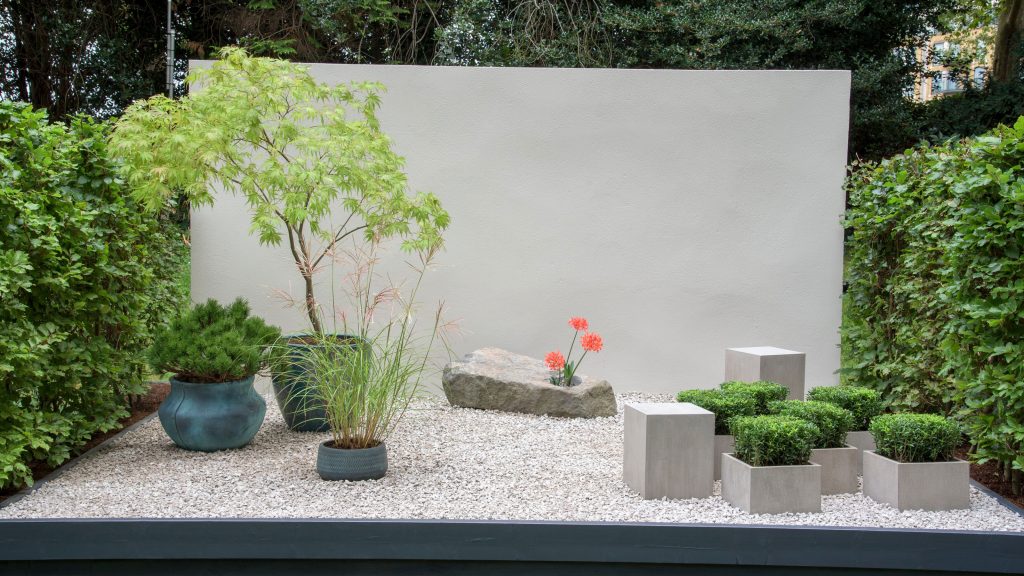
The pandemic has caused many to re-evaluate their work/life balance. Millions more are now gardening than before and many have discovered the meditative power of gardens and gardening, whether that be by getting your hands in the dirt, taking cuttings, or simply taking the time to relax in the garden. Gardens have become a source of grounding or mindfulness for many. Sanctuary Gardens is a new category to the show and Mika Misawa’s ‘A Tranquil Space in the City’ demonstrates that a well considered garden, no matter how small, can relax mind, body and soul. Imagine being perched on one of her cubes or the end of the rock and the world melting away.
Gardens that challenge the notion “what is a garden?”
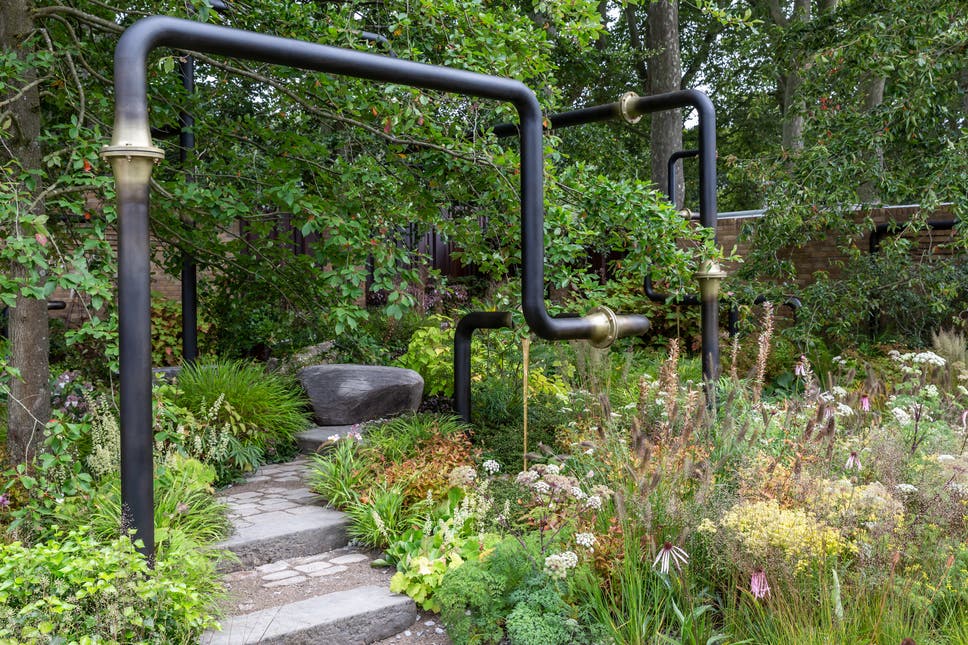
For a good while now there has always been one ‘garden’ that each year challenges the public to reconsider what constitutes a garden. The show provokes the public to consider the possibilities for ‘greening the grey’ and to reimagine the possibilities for unloved urban or former industrial spaces, and sometimes with quite strong reactions either way. Great examples in the past have included James and Helen Basson’s M&G garden from 2017. This year it is Charlotte Harris and Hugo Bugg’s turn to carry that mantle with their M&G garden, which imagines an urban space reimagined as an urban pocket garden utilising reused and reclaimed materials.
Water
Water, however big or small, is almost always key feature in many gardens over the years and with good reason. Water attracts wildlife, is relaxing to hear, and, as Sarah Eberle’s The Psalm 23 Garden ably demonstates, drowns out unwanted noise, very useful if living in a noisy urban situation.
Woodland planting
The vertical dimension in gardens often is underestimated by the amateur gardener. Designers continue to demonstrate that not every garden must be bathed in sunshine to be capable of containing a visually interesting and diverse planting scheme.
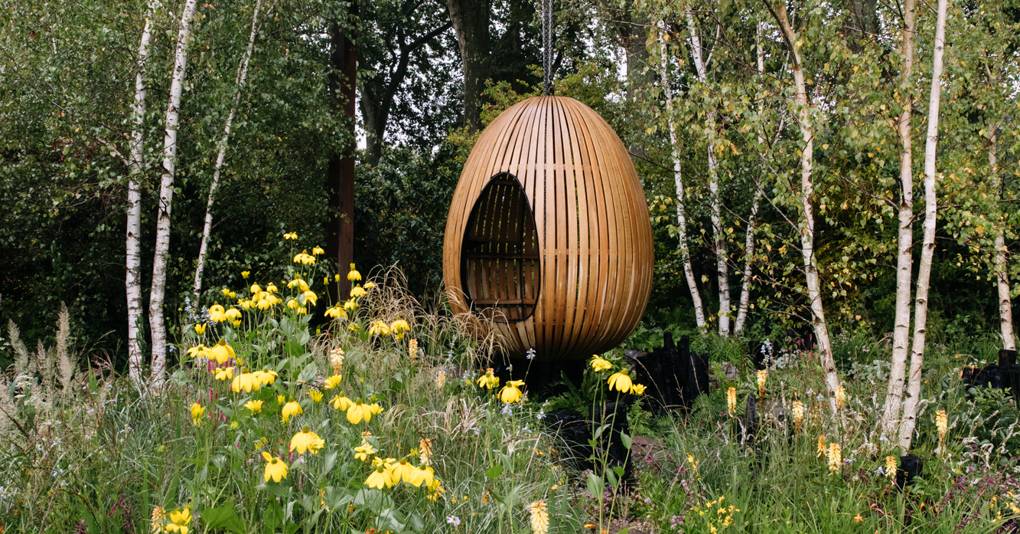
The Yeo Valley Organic garden by Tom Massey and Sarah Mead typifies this approach. In a plot sized somewhere between 150 and 200m2 the designers have been able to fit in no less than 4 very mature multistem birch trees and a pollarded willow, providing shade and cover yet still maintaining that feeling of being open and full of light. Setting a garden as if it were at a woodland edge offers the best of both worlds.
Conifers continue their resurrection as a desirable garden tree
Once considered a somewhat fuddy duddy plant from your grandparents’ garden from the 70’s, conifers continue to enjoy a renaissance and are now a must have plant. They have a lot to offer including year round presence (nearly every species is evergreen), many are native and so adapted to the climate, many are drought tolerant, and they offer a great textural contrast to broad leafed species. Statuesque examples include the Jack Pine. More modest sized conifers include Pinus mugo and Pinus sylvestris ‘Watereri’
Stone
A trend really kicked off in earnest by Dan Pearson with his Laurent Perrier garden in 2015, stone isn’t just for rockeries and can add real drama, presence and atmosphere to a garden. Less is more, but go big. Choose local stone: it won’t look out of place in the garden and will have a much smaller carbon footprint. Integrate stone into other features, such as the edge of a deck, to really trick the eye into believing the stone is authentic and has always been there.
Wood structures
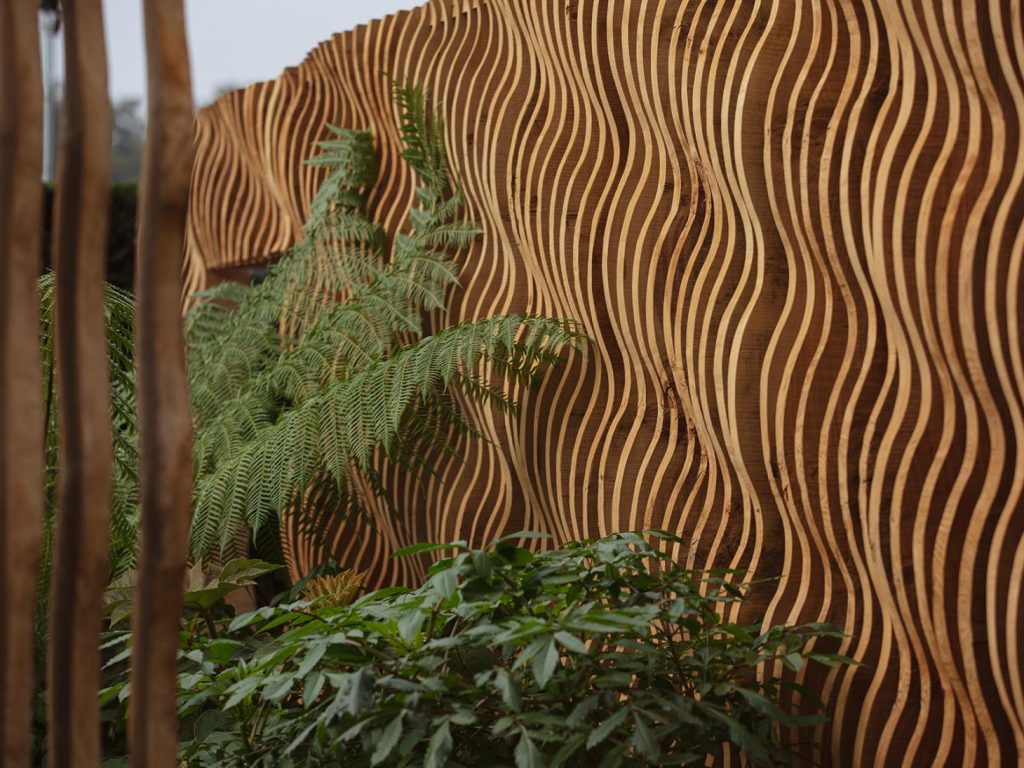
Wooden structure enveloping seating areas were particularly prevalent this year, in particular in their natural colour or charred. Both are sustainable if the wood itself comes from a local renewable source. Choose a hardwood with natural oils to repel the worst of the weather (such as oak or chesnut), or char it. This avoids the need for paint, oils or varnishes that can leech chemicals into the environment, as well as having a carbon footprint in their manufacture and transport too. Good examples include The Florence Nightingale Garden by Robert Myers, The Boodles Secret Garden by Thomas Hoblyn and The Finnish Soul Garden by Taina Suonio.
Drought tolerance
RHS judging criteria requires any planting scheme devised in a garden to be able to ‘work’ in a real life scenario. Increasingly, because of climate change and the forecast for the future, the planting pendulum swings towards drought tolerant planting and the need to be sensible with water. Not always, but often, natives or near natives will be better adapted to the climate and the use of native and near native plants has been in abundance at the show. A liberal use of trees such as Birches, is one such example.
City gardens

More focus is being given to smaller living spaces, and rightly so given that city living often compromises the ability to have a garden for onesself. The RHS has embraced this by introducting container planting and houseplant exhibits as well as introducing a new category of balcony gardens, which judging by their popularity all seem destined to become permanent fixtures of the show. Successful designs, such as The Landform Balcony Garden by Nicola Hale, stick to mantras of selecting a small number of plants and limiting the pallette of materials, but going big with them. Fewer, but larger, items or materials always work better in small spaces. It avoids a fussy, cluttered look calming both eye and mind.
Scenescence
This is a buzzword that ought to be on the lips of every gardener. Its origins in latin, the word simply means aging, or death. The autumn timing of this year’s show has allowed designers to demonstrate that an end to summer is not the end of the gardening year and that the process of scenescence is a season to be celebrated in the garden. Traditional horticultural practice has been to ‘clear away’ and ‘tidy up the garden’ in autumn for the following year. Yet, there is a beauty in allowing seedheads and stems to stand over winter.
Many of the show gardens, such as Tom Massey’s Yeo Valley Organic Garden and the M&G garden by Charlotte Harris and Hugo Bugg, embrance plants that are beginning to turn (such as the seedheads of Crocosmia, drying grasses, or bronzing foliage of Persicaria) towards their autumnal hues rather than being forced artificially to look their earlier season’s selves.
There is an important ecological justification for allowing things to stand as they are too since birds will feed upon the seedheads and many insects and other species need this vital vegetation in which to overwinter and hibernate. Vegetation composting in situ replenishes the soil. In my own practice, I come up against strong resistence from my own clients who refuse to be persuaded by this point of view. If the RHS chooses to make a September Chelsea show a more regular occurrence perhaps this idea will become more mainstream and gain more widespread acceptance.
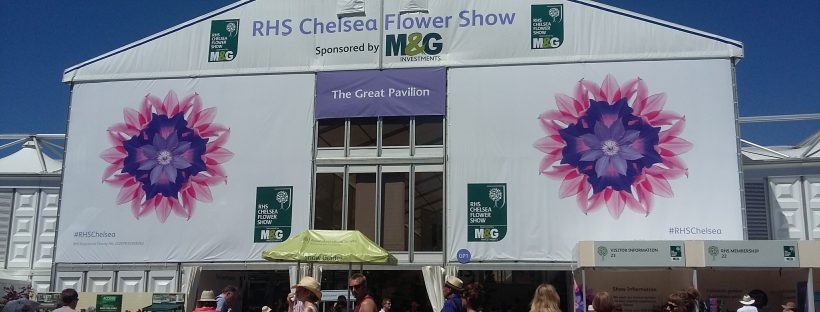
No responses yet